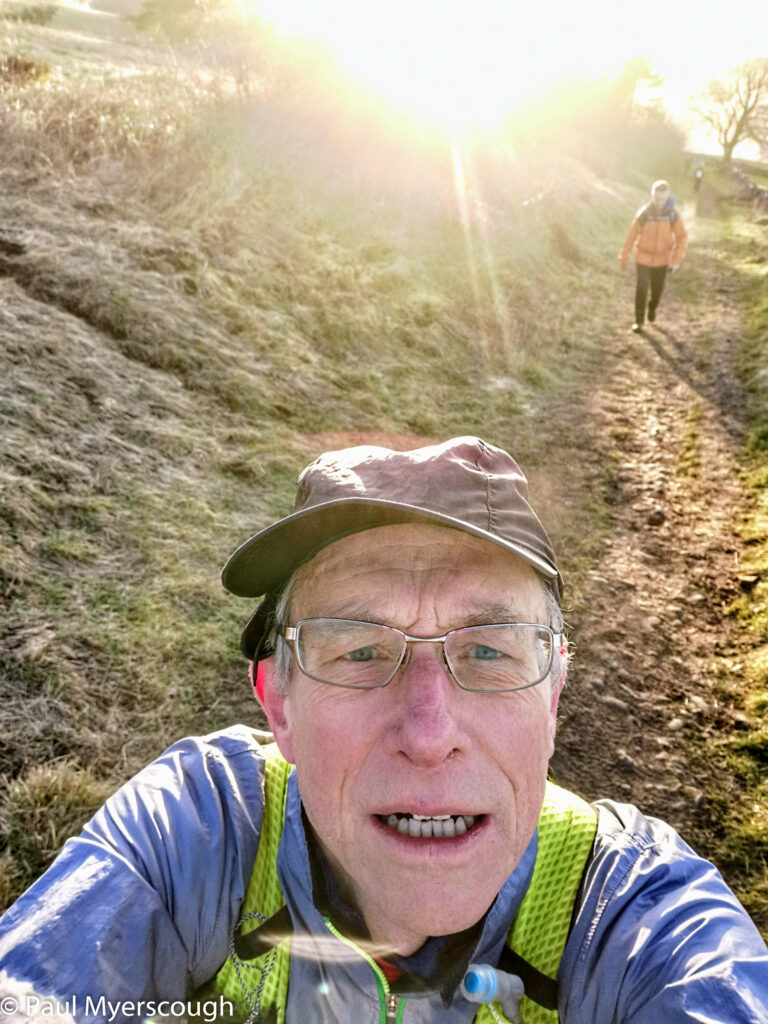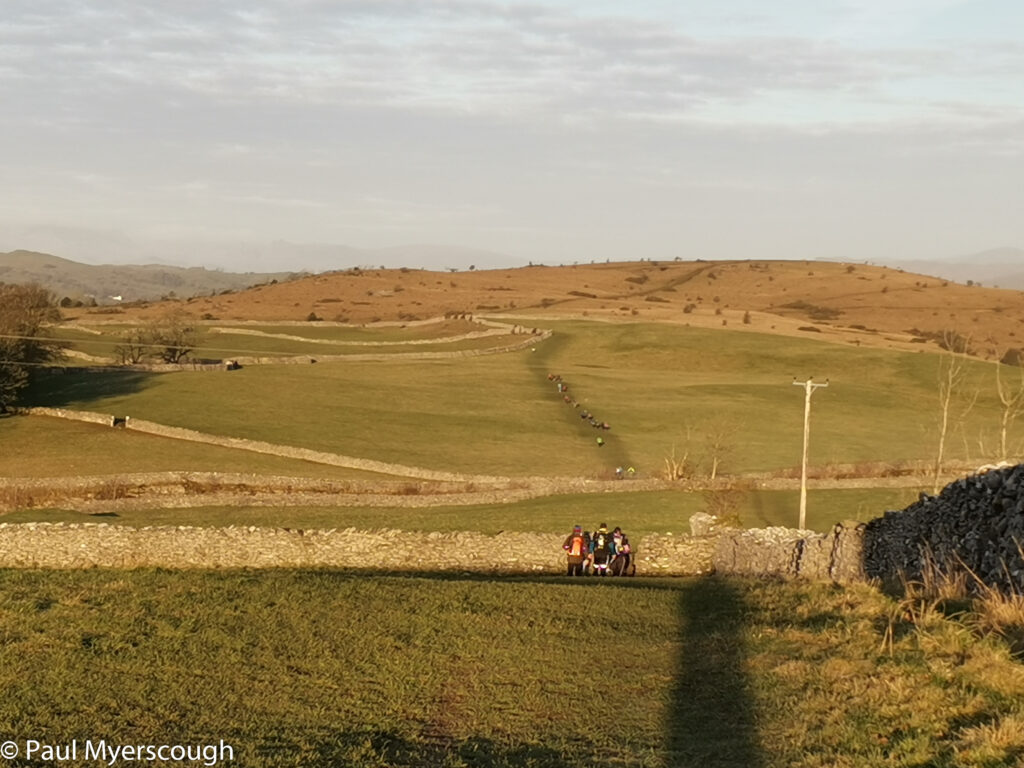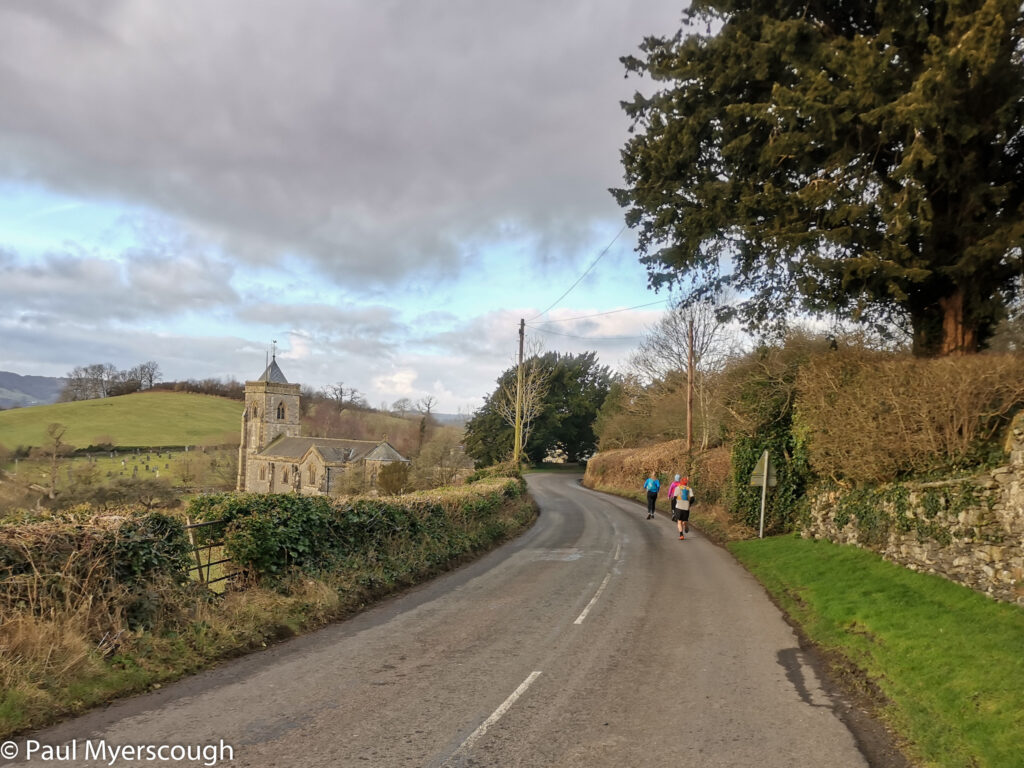For all runners, but especially older runners I’m an advocate of ‘long and slow’. There are plenty of events to challenge you, from 10k, marathons and half-marathons, 50k, 50 miles, 100k, even more.

Training for distance running requires some special considerations. The body adapts to what you do. Run 10k over and over again and, even if you don’t get faster, it will become easier. At first there maybe some strain in the joints on the route and tightness in the muscles afterwards; with repetition several times a week these feelings will pass as the body and mind learn what to expect.
Marathons and longer runs will take a number of hours to complete, and it is not feasible to repeat this several times a week. As well as hours of running, there will be recovery time to be be built-in to the schedule. Conventional wisdom suggests that training should include a variation in daily distances with the occasional back-to-back long runs where the combination of two adjacent days begins to reach the long running target.
My approach is to train to around half the distance of a forthcoming event. Logic tells me that if I can run 30k without injury or pain and if I can recover reasonably quickly, then I can handle a 60k event.
Heading off for an organised run that is much further than you have run before is a bit daunting.
In the UK we are lucky to have the LDWA with chapters all over the country. LDWA is the Long Distance Walking Association. Although they are focussed on walking runners are welcome on many of their ‘challenge’ events. Their regular weekly walks are 20 miles or more and the challenge event are upto 100 miles long (160k!).
Some months after I got a place in the Lakeland 50 mile race I received an email inviting me to a ‘Spring into the Lakeland 50’ challenge. This was very convenient. The Race was in July, but the ‘spring’ event was in April and it seemed an ideal time to test myself on such a long run, with some months remaining to adjust my training.
In any event Covid arrived in March, and the scheduled challenge was cancelled. So was the race in July. But the idea remained – to find conveniently timed LDWA events to probe and test my capability before a schedule run.
Early in the year, at the end of January, there’s another regular event put on by the same LDWA chapter in the the Lake District. That’s Lythe is a 40k challenge. The 2022 run was the 40th anniversary.
Download file for GPSYou should be able to see the route on the OS map above. Zoom in with the + and pull it around with the mouse to see it in detail.
How long would it take? I looked at the previous years’ results and could see a great variation with some coming in at around 3 hours, whereas those at the back were taking more that 10!
Covid restrictions were in place in January 2022 and this meant a staggered start. The walkers were encouraged to head off earlier from 8 o’clock, the runners a little later. Every 10 minutes a new group set off. It made for an unsettling start. My small group headed off walking fast for a short while, then a couple broke out into a jog. Did anyone know where they were going? It didn’t seem certain at all with 6 of us taking 3 different routes at one point.

Once we left the town of Kendal the route headed up into sunshine on the golf course and soon there was some sort of rhythm developing along the common path. A mass start does mean more certainty with people to follow at every turn but this approach, with the walkers going off first, meant that the joggers for most of the route have someone in front to overhaul.

The Lake District is one of the UK’s mountain areas. Kendal however is on the periphery and the route has no serious hills to climb. The ‘Lythe’ in the name of this event is a river which meanders in a wide flat valley heading toward the coast. There are a couple of elevated sections where the vista is wide and the views impressive.

Leaving the heights of the golf course there’s a clear view of the path ahead with some of the earlier starters stretched out all the way to the horizon.
There are no waymarks; you are expected to read and follow the instructions which describe key points enroute. As well taking a printed copy of these I’ve plotted the route on the OS app and printed the map out. Belts and braces! It is very easy however to leave this information in the pocket or pack however and blindly follow anyone who seems to know what they are doing. There are runners and walkers that have done this event many times.
The checkpoints are at 10km intervals. All are village halls and are organised with Covid in mind. One-way traffic as far as possible and individual portions for snacks. Drinks are dispensed into cups which are carried by the entrants.
There’s a bit of road running, but the motor traffic is somewhere else today!
Many of the walkers are already passed soon after the first checkpoint. On the hill here,looking towards the Lyth estuary it is hard to discern any other participants. Then a flash of orange appears from behind a bush; they’re heading in the right direction!

The blue house is a feature of the route. If you don’t see this you are on the wrong road!

After the 3rd check point and fuelling station at Levens Institute there is one more long gradual hill to conquer. It is always nice to follow an escarpment with views across the lower ground. There was some rain in the air. The walkers were far behind and the runners were very spread out. It was easy to miss a turn and continue on the attractive path to a trig point ahead. Here were a couple of other who had missed the route.
Once over the watershed to the east the sprawl of Kendal became visible below. And the roads linking the fellside to our destination at the Abbot Community Hall. Hot soup and LDWA birthday cake was awaiting!

How long did it take? 5 hours and 17 minutes according to the results.
| 56 | Paul Myerscough | Main | Finished | 8:50 | 14:07 |






